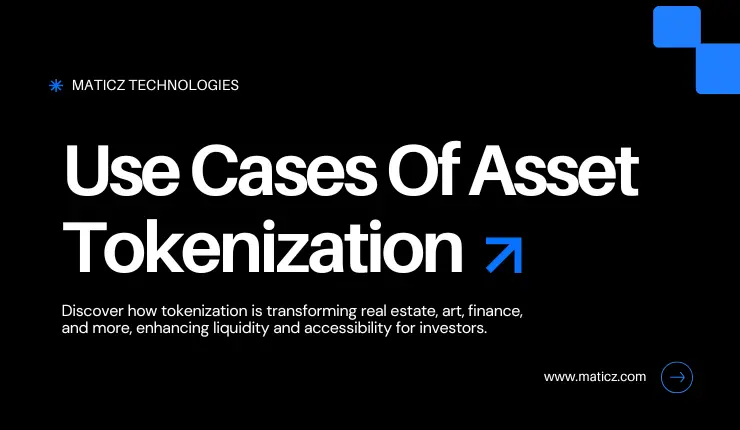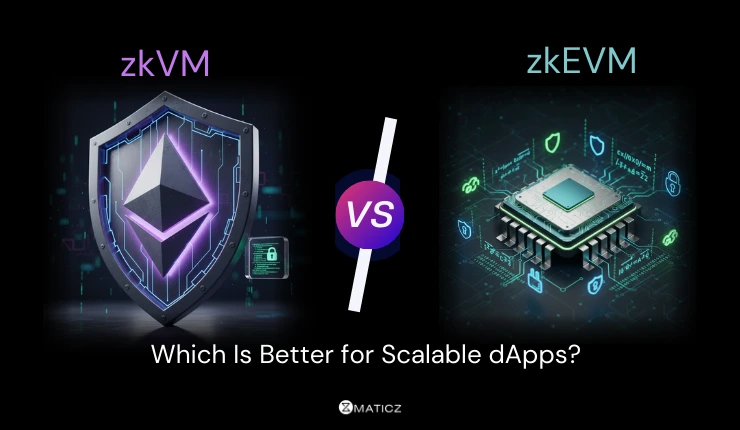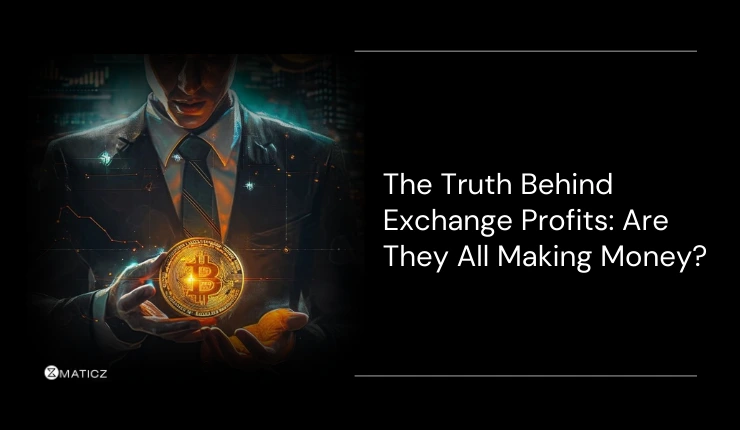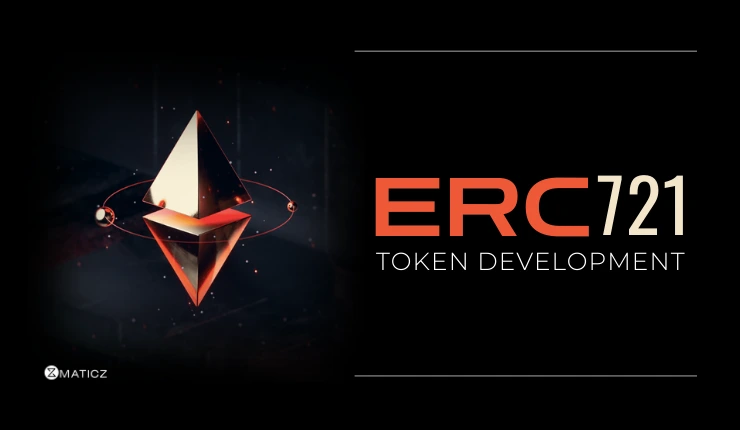Share Posts

Top 10 Real World Asset Tokenization Use Cases in 2025
46
2290
103
Asset tokenization is changing how we invest in and handle different types of assets, like real estate and healthcare records. Using blockchain technology, tokenization improves accessibility, liquidity, and transparency which makes hard-to-trade markets more efficient. Here’s a simplified look at its use in various sectors:
Real Estate Tokenization
Real estate, which is usually hard to buy and sell quickly, has become easier to access and trade through tokenization. It allows people to own small parts of industrial, commercial, and residential properties. This makes it simpler for smaller investors to enter the market and improves how easily properties can be bought or sold.
For example, an apartment worth $30 million, can be split up into 30,000 tokens, each worth $1,000. They can be purchased, sold, or traded by investors on secondary markets or blockchain-based platforms.
Learn more about real estate tokenization>
Art & Collectibles
High-value artworks and rare valuables are tokenized and owned by multiple investors through fractional ownership. This enhances liquidity in the art market and makes it easy for small investors to participate in owning valuable art items. It also enables efficient digital identity tracking and reduces fraud.
For instance, a $10 million painting by Leonardo Da Vinci is divided into 100,000 virtual tokens. Collectors and investors can purchase, sell, or exchange the tokens, representing a tiny portion of the painting.
Intellectual Property
The tokenization of proprietary rights lets creators sell small shares of their patents, trademarks, copyrights, and royalties from music or films. For example, a musician can tokenize the future earnings from an album, allowing fans or investors to buy a share of those earnings. Each token represents a part of the ownership of those rights.
This is an innovative way for an IP holder to raise capital. This connects creators directly with investors, allowing IP holders to get funding quickly while giving investors a chance to earn returns based on the IP's success.
Financial Securities
Traditional financial instruments like stocks, bonds, and debts can be tokenized, allowing for fractional ownership and global trading. For example, a corporation issues tokenized bonds in which each token represents a fraction of the bond.
In a blockchain, investors can buy, sell, and trade these tokens in real-time. This eliminates intermediaries, reduces transaction costs, and provides instantaneous settlement, making the investment process more efficient and accessible to global investors.
Commodities
tokenization of economic goods is turning physical assets like gold, oil, and agricultural products into tokens on a blockchain. Since each token is a fraction of the underlying products, trading and owning these products becomes simpler than handling them physically.
For instance, 1 gram of gold is turned into one token in the tokenized gold reserve in the vault. Investors can buy, sell, or trade them without the hassle of storage or transporting them.
This strategy boosts liquidity and streamlines transactions through fraction ownership. Tokenized commodities reduce transactional costs, can be exchanged instantly and globally, and need no middlemen.
Carbon Credits
Carbon credits tokenization is turning carbon offset certificates into blockchain-based digital tokens. Each token represents a particular amount of carbon emissions reduced. Tokenization improves the transparency, traceability, and liquidity in carbon markets.
For example, 10,000 carbon credits are provided to a company that reduces carbon emissions and are stored in blockchain. Each token represents 1 ton of CO2 offset. Businesses buy these tokens to reduce their carbon emissions and can be traded on decentralized platforms.
It is easier for companies to meet sustainability targets when carbon credits are exchangeable globally. By buying tokens that reduce their carbon footprint, smaller companies and individuals can take part in carbon markets.
Private Equity & Venture Capital
Venture capital firms and private companies can reach a wider range of investors through tokenization by dividing the ownership of private investments. Tokenization gives flexible exit options to early investors and boosts liquidity by representing shares as blockchain-based digital tokens.
Venture capital funds tokenize their holdings by creating digital tokens that signify a portion of the fund’s ownership stakes in different startups. By purchasing these tokens, investors can get exposure to a wide range of startup ventures without needing large capital.
Before more conventional exits like IPOs or acquisitions, investors have access to liquidity options through the tokens' secondary market trading. The tokenization of private equity allows smaller investors to participate in VC deals typically reserved for high-end investors.
Insurance
The tokenization of insurance is converting the insurance policies into digital tokens that facilitate trading, fractional ownership, and risk-sharing. By creating secondary markets, this strategy gives policyholders access to new sources of capital and liquidity.
For instance, A life insurance policyholder tokenizes their policy into tradable tokens. Investors making upfront payments can purchase a share of the policy. When the policy matures or claims are paid, the token holders get a share of the payout.
Gaming
Gamers can hold tokens on a blockchain with tokenization, that represents digital game assets like characters, virtual money, and weapons. These assets gain real-world value, become unique, and can be traded to players giving them chances to profit from their gaming experiences.
For example, rare weapons and skin can be tokenized into NFTs (non-fungible tokens). They are available for purchase, sale, and trade on the blockchain market. A seamless virtual economy is created within the game when a player wins a rare skin and sells it to another player.
This enhances player engagement and enables a real-world financial incentive for the in-game achievements.
Health Records
Tokenizing healthcare records is transforming patient data into safe and blockchain-based digital tokens. To protect privacy and maintain data integrity, this allows patients to manage and distribute access to their medical records transparently and safely.
Patients can allow particular healthcare authorities to access their tokenized healthcare records through blockchain-based tokens. For example, if a medical officer needs the patient’s records for treatment, the patient can allow temporary access via tokens.
This ensures that blockchain records are tamper-proof and safe. Individuals can control and keep an eye on who has access to private medical records. Tokenization of healthcare records minimizes data fragmentation, facilitating prompt, accurate record retrieval for healthcare providers.
Conclusion
Tokenization enables fractional ownership, easier asset trading, and secure data management across industries. From fractional real estate ownership to tokenized healthcare data, this technology democratizes investment opportunities and improves market efficiency. As more sectors adopt tokenization, we will see a more inclusive and streamlined global marketplace.
Ready to explore the potential of asset tokenization for your investments? Contact Maticz, the leading real-world asset tokenization company to start transforming your assets into secure, tradable digital tokens today!
Tap Into the Future
The latest insights, posts, and project updates - straight to your inbox.




